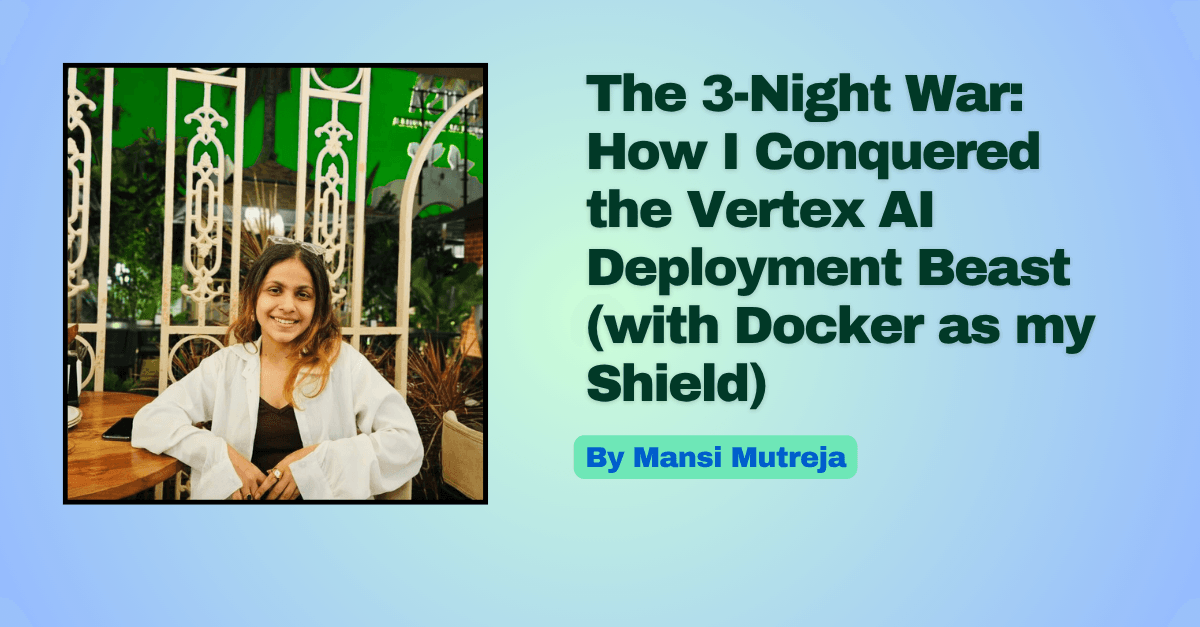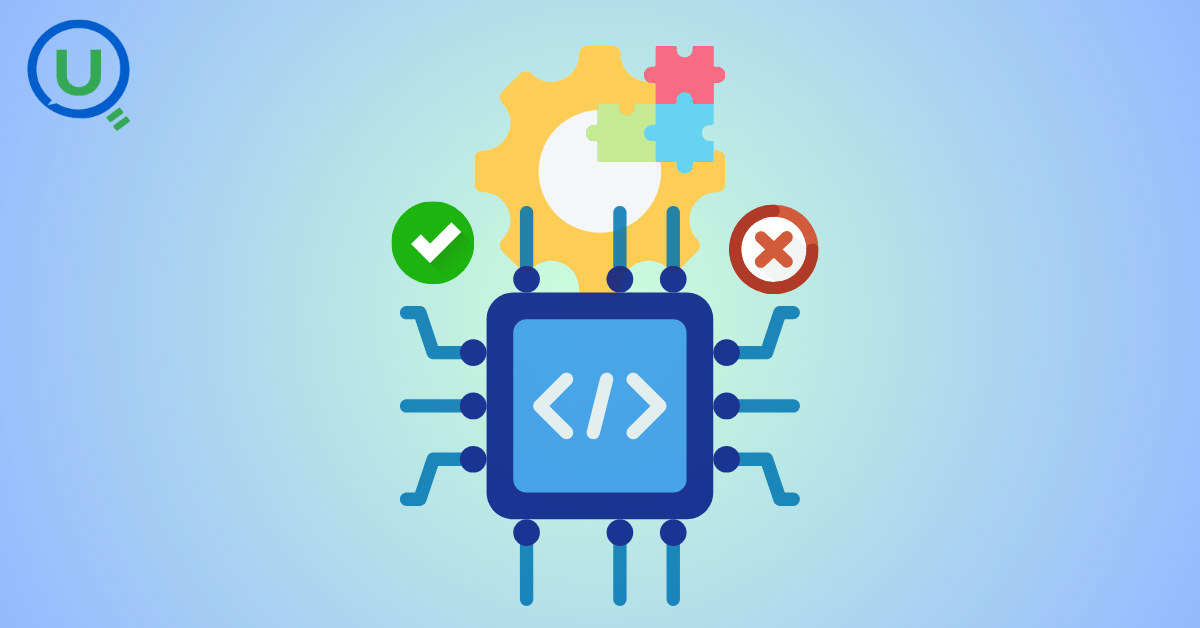The 3-Night War: Conquering Vertex AI Deployment with Docker

Ready to transform your data strategy with cutting-edge solutions?
For what felt like an eternity, the gentle hum of my mac was drowned out by the relentless ticking of the clock, each tick echoing my mounting frustration. Three sleepless nights. That's how long I wrestled with the beast of machine learning model deployment on Google Cloud's Vertex AI. Just as I was about to raise the white flag, the dawn broke, and I, a self-proclaimed Docker novice, emerged victorious.
This isn't a story for the "experts" who navigate cloud deployments with ease. This is for anyone who's ever felt the cold dread of a cryptic error message, the endless loop of dependency hell, or the sheer terror of "Permission Denied." This is my war, and here’s how I (eventually) won.
Chapter 1: The Pre-built Promise, The Python Paradox
My journey began innocently enough. I had a fantastic LightGBM model, honed to perfection in my trusty Colab notebook. Vertex AI beckoned with its promise of "pre-built containers" – a frictionless path to deployment, or so I thought.
My first skirmish: a Python protocol mismatch. My Colab environment, a gleaming Python 3.11, happily pickled my model with protocol 5. But Vertex AI's pre-built containers? A stern Python 3.7, stuck on protocol 4. A minor detail, a monumental hurdle.
"Just downgrade Python in Colab!" I naively thought. Oh, the sweet illusion. What followed was a dizzying descent into dependency hell. Scikit-learn, NumPy, Pandas – they all began to contradict each other. Solving one package version mismatch immediately begat another, a hydra of broken libraries. My loyal AI companions, Claude and Gemini, usually so resourceful, eventually threw up their digital hands, confessing, "We have no more options to resolve this package dependency nightmare."
That's when they whispered the "D-word": Docker.
Chapter 2: Enter the Docker Dragon – My Newfound Foe (and Friend)
Docker. A fancy word, a distant dream. In my previous internships, I'd seen seniors dance with it from afar, always promising "later" for hands-on experience. Now, it was my only hope. A spark of excitement ignited amidst the despair.
The ritual began:
Local Directory Creation: A humble folder, model_files_test_2.
Library Alignment: Meticulously checking versions.
The Sacred Texts: requirements.txt, predictor.py, Dockerfile.
The Journey: Zipping, downloading to local, uploading to Cloud Shell, unzipping. The cycle of file transfer was a mini-saga in itself.
The Incantation: docker build and docker push – commands that once felt like arcane magic.
The image was pushed to the Artifact Registry! A small victory, soon overshadowed by the beast's roar.
Chapter 3: The Beast's Many Heads – Errors Galore!
My model was "failing unexpectedly." The server was crashing. Each attempt revealed a new layer of complexity:
The SDK Parameter Trap: My initial deployment code was passing serving_container_image_uri as a parameter to endpoint.deploy(). Turns out, the model was already uploaded with this parameter during its registration phase. Vertex AI SDK, in its wisdom, didn't appreciate redundancy, leading to a TypeError. Lesson 1: Understand your SDK's nuances!
The Invisible Walls (IAM Permissions): Even with the TypeError fixed, the beast scoffed. "Permission Denied!" it growled. This was a silent war against unseen barriers. I had to become a detective, meticulously granting roles: Artifact Registry Writer, Artifact Registry Administrator, Owner, Editor, Storage Object Viewer. Each role felt like unlocking a tiny, stubborn lock. Lesson 2: IAM is the bedrock. Don't underestimate its power (and complexity).
The Version Mismatch Strikes Back (sklearn Edition): Just when I thought I was making progress, the familiar ghost reappeared: "sklearn version mismatch between container and with which model was trained." Despite my best efforts to standardize, the serving container stubbornly held onto an older sklearn version (1.6.1) while my model was pickled with a newer one (1.7.0). This was the true culprit behind the "Model server exited unexpectedly" crashes. Lesson 3: Environment consistency is NOT optional. Pin your versions rigorously! (A specific requirements.txt fix and adding /ping endpoint to predictor.py were crucial here, as diagnosed later).
The Docker Auth Conundrum: Then, Docker itself refused to play nice. "Container cannot authenticate to Google Cloud!" This wasn't about the model loading, but Docker's inability to even pull the image from Artifact Registry. The fix involved gcloud auth configure-docker – a vital step for local Docker interaction with GCP registries. Lesson 4: Docker needs its own special handshake with GCP registries.
The Elusive IsADirectoryError: A strange beast indeed. My local docker run tests kept failing with IsADirectoryError: [Errno 21] Is a directory: '/app/key.json' (later service_account.json). Even though I was mounting a file, the container thought it was a directory. This was a perplexing ghost in the machine, likely a subtle interaction with how I was constructing the image or where files were expected. (A temporary workaround involved mounting to /tmp, but the true fix was likely tied to fixing previous issues and ensuring a clean image build). Lesson 5: Sometimes, errors hide deeper conflicts than they appear.
Chapter 4: The 2 AM Breakthrough and the Screenshot Proof
It was 2 AM. My eyes burned, my brain a fog. "This is the last try," I muttered, convinced I was about to ask for help. I ran the final, battle-hardened docker run command, incorporating all the lessons learned: correct sklearn version, all IAM roles granted, clean Docker authentication, a robust predictor.py, and even a fallback to pull the model from GCS in case local copy failed.
I watched the logs scroll for 25 minutes, then succumbed to exhaustion, laptop on my lap.
I woke up at 5 AM. A gasp.
The laptop screen glowed. The Vertex AI endpoint status: ACTIVE.
The Colab notebook: "Deployment successful!"
And then, the sweet, sweet sight: predictions flowing in.
My first reaction? Not celebration, but paranoia. Was this a dream? I instinctively snapped a screenshot, a tangible proof to cling to when reality reasserted itself.
The Spoils of War: Lessons Learned
I'm not saying I achieved something monumental in the grand scheme of MLOps. But for me, this was a colossal victory. It wasn't just about deploying a model; it was about:
Embracing Complexity: From fear to functional understanding of Docker.
The Power of Persistence: Three nights, countless errors, but I didn't give up.
Debugging Like a Pro: Learning to dissect tracebacks, understand gunicorn logs, and systematically eliminate variables.
The Indispensable requirements.txt: It's not just a file; it's the DNA of your deployment environment.
IAM is Your Gatekeeper: Master it, or be forever blocked.
The Sheer Satisfaction: There's nothing quite like the feeling of overcoming an impossible problem.
So, if you're out there, battling your own deployment beasts, remember my 5 AM screenshot. Keep pushing. The breakthrough might just be waiting for you at the brink of surrender.
Go forth and dockerize! Your active endpoint awaits.
Ready to Experience the Future of Data?
You Might Also Like

Explore how AI-assisted coding tools like Vibe and Replit are transforming software development. In this insightful conversation, Supreet Tare shares real-world examples, team dynamics, and best practices for using generative AI in coding—from accelerating MVPs to prompt engineering tips.

Explore the AI-native mindset with Nitin Gupta, Founder of FlytBase, as he discusses how businesses must embrace AI from the core to stay relevant in the evolving tech landscape. In this podcast, learn how AI enhances team productivity, and sparks creativity.

This conversation helps understand the meaning of embeddings via lucid examples in cricket

A conversation between a mentee and a mentor to clarify why Snowflake should be a preferred choice for enterprise customers

A conversation between a mentee and a mentor to clarify that datawarehouses are different from databases and are purposely designed for analytical purposes
